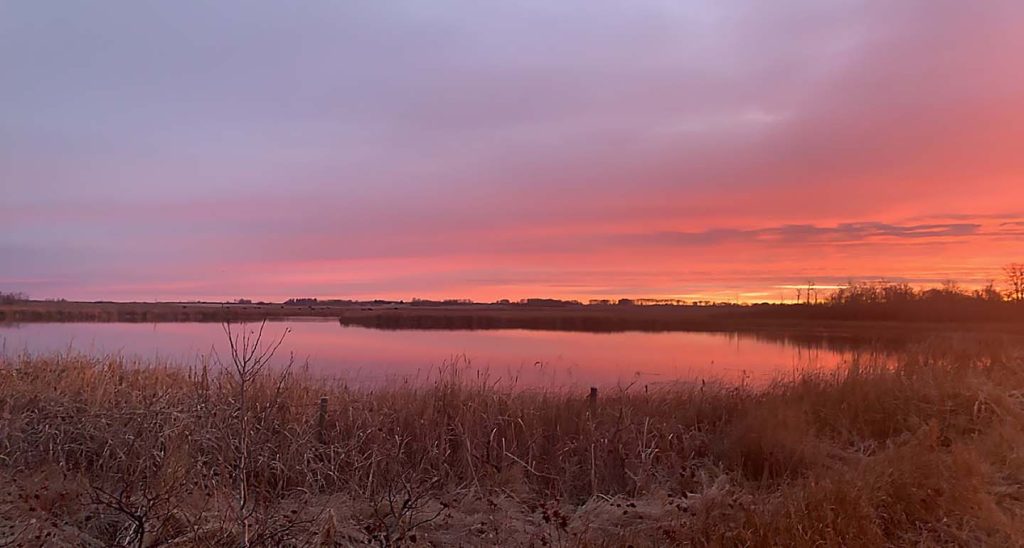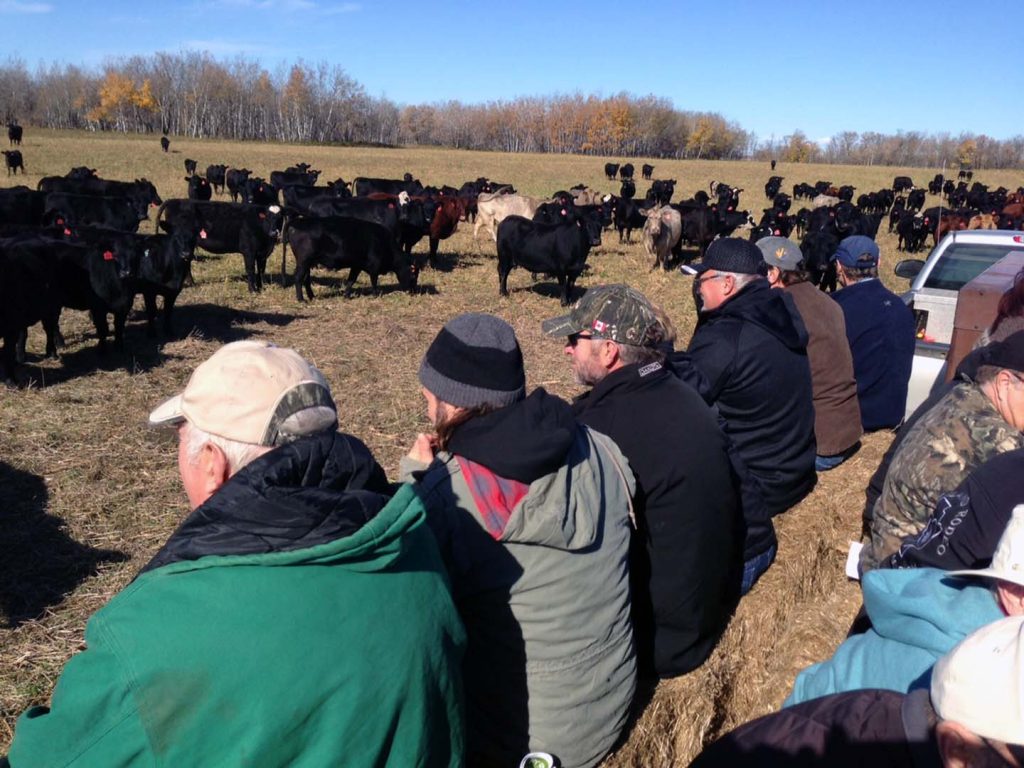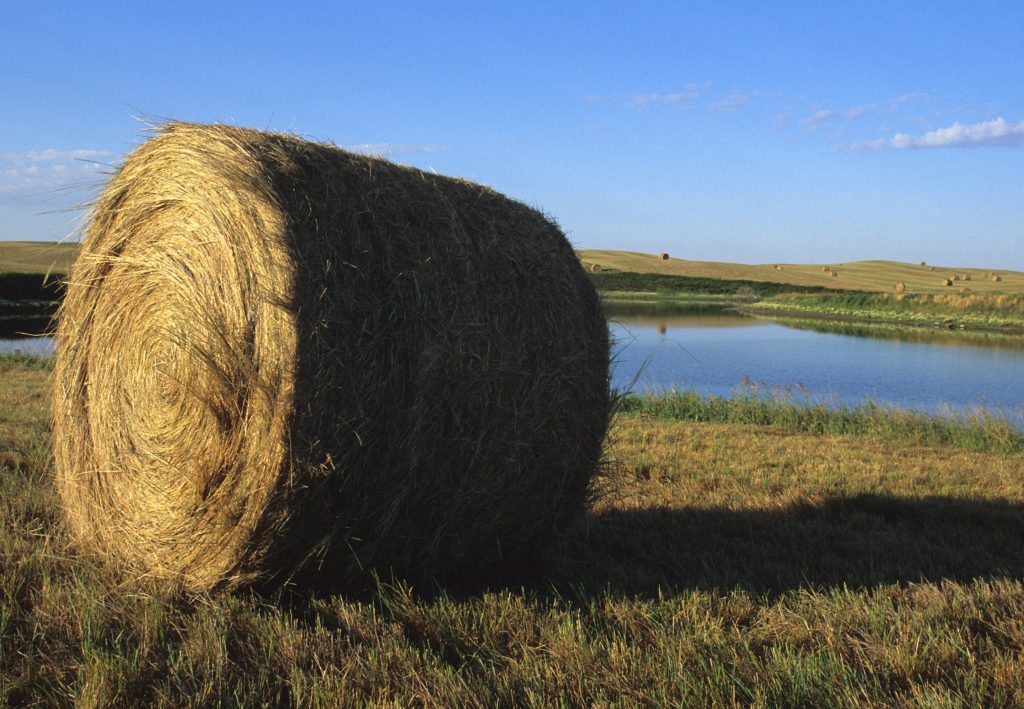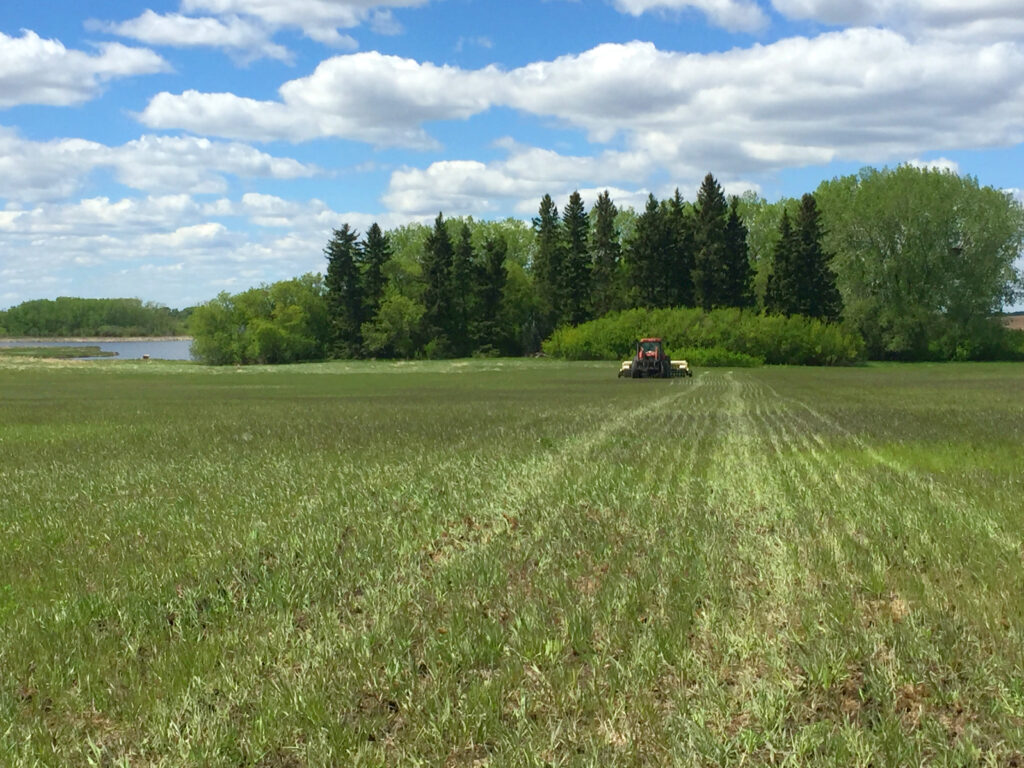Reclaim marginal crop areas in Manitoba
The Marginal Areas Program (MAP) increases your profits while farming fewer acres. Receive dollars to seed hard-to-access or poorly producing areas to perennial forages. Last year, the average payment was $5,500.
This year has been phenomenal. We got 205 silage bales off 45 acres. Mind-blowing! Not only that but the kochia areas and the saline areas are shrinking, which is exactly what we want. I worked many years as a retail ag manager and grain farmers should look at my results. DUC’s MAP can rejuvenate some of these non-producing acres with perennial forage.
Cam Tibbett
Camo Cattle Company
Neepawa MB
In addition to the financial incentive:
- increase pollinator habitat and biodiversity
- reduce herbicide-resistant weeds
- create a buffer zone to meet product label guidelines
- manage clubroot issues
With the Marginal Areas Program, we are not wasting inputs like fertilizer, seed and chemical – and therefore money – on unproductive areas of our farm. The MAP payment also helps with the cost of establishing hay/feed, the biggest expense and input for our cows.
Amy Bell
Prairie Girl Land and Livestock
Isabella MB
Talk to Jenai Buchanan to find out if you are eligible for the Marginal Areas Program
By Phone: 204-861-2587
Ducks Unlimited Canada uses cookies to gather data from our subscribers to provide a better user experience on the Ducks Unlimited Canada website (ducks.ca). By submitting this form, you consent to Ducks Unlimited Canada collecting web activity data when you visit ducks.ca or canards.ca. Ducks Unlimited Canada is committed to protecting your privacy and will never share or sell this information. For more information, check out our cookie policy and privacy policy.
Ducks Unlimited Canada Marginal Acres Program – video tips
More tips for forage success in marginal areas
- Seed early –take advantage of cool, moist growing conditions and seed as soon as the risk of spring frost is over. Ideal timing for most of Manitoba is around May long weekend. Seeding later than June 20 is not recommended unless sufficient rains are expected, so dormant seeding should be considered (see 2).
- Dormant seeding – saline areas are often near sloughs with saturated soils and spring seeding in excess moisture can cause compaction which may prevent seedlings from emerging. Dormant seeding is an option but wait until the soil temperatures are below five degrees C (generally around Halloween).
- Phosphate (P) considerations – for field scale plantings, apply P when seeding forages. In marginal areas, there is likely an excess of P from previously fertilizing crops with reduced yields that did not use what was applied. Soil test to confirm but fertilizer application is likely not necessary in saline areas.
- Seed is important – certified seed ensures good germination and minimal weed seeds. Blend diversity ensures at least one type of plant will grow in all parts of the field. For saline areas, choose forages that are saline-tolerant. In flood-prone spots with two weeks of standing water, include flood-tolerant varieties.
- Don’t seed too deep – forages should not be seeded deeper than 1/2”-3/4” (canola seed depth is ideal). Anything deeper reduces emergence and plant counts. Resist the urge to chase moisture by seeding deeper in dry conditions, because this also limits the opportunity for germinating seeds to reach the soil surface.
- Use an air seeder/seed drill whenever possible – broadcast seeding is quick and convenient but the the crop may run out of water and fail to establish if post-seeding conditions are dry. When the area has been tilled and the soil is “fluffy”, take extra care not to seed too deep.
- Say ‘no’ to companion crops – many annual crops have poor salinity tolerance so it‘s debatable whether to use a cover crop in saline areas. If a companion crop is used, seed at no more than one third of full seeding rate. Barley is the best choice for salinity tolerance. Also increase your forage seeding rate if using a cover crop.
- Chemical weed control – without an option to control in-crop weeds, forage blends with both grasses and legumes require pre-seed weed control. Ensure the control chemicals have no residual effects on forage seedlings. Expect weed pressure for the first few years in saline plantings, even with weed control (see 9).
- Mechanical weed control – mowing kochia before it sets seed removes 80% of the seed bank for the next crop season. Foxtail barley doesn’t like competition or mowing so keep the ground covered with grass and mow before weeds set seed – possibly multiple times in the first two seasons – to set back foxtail.
- Seed heavy – any crop is difficult to establish in saline soils and some won’t germinate at all. By seeding extra pounds per acre (15 lbs recommended), you allow for plant losses from excess heat or moisture, winterkill and other factors. If dormant seeding or broadcast seeding, increase your seeding rate by 30%.
- Don’t be too conservative – often, suboptimal crop yields extend a drill width or two past the bare patch. A best management practice is to seed an extra pass or two where some stubble is still present, improving the chances of a successful forage establishment.
- Touch up seeding – minimal disturbance is important as forages are establishing. Use a disc drill, scratch in with an air seeder or broadcast/harrow over top of existing forage. Once plants are established, they will draw down the water table and pull the salts with it, improving salinity.
- Be patient – it may take two to three years before saline-tolerant plants establish and fill in blank areas. Creeping rooted plants should fill these areas over time if soil is left undisturbed but touch up seeding may be required, especially in areas with no vegetation growing and with white surface salts.
- Salinity is a water problem, not a soil problem – in wet years, the water table rises and carries salts to the soil surface. As conditions dry, salinity spreads via surface evaporation. Ground cover mitigates salinity by reducing evaporation and using water in the soil profile with deep rooted perennials.
- Leave the forage intact – don’t take the forage out of production at the first sign of soil improvement. Salinity may reduce within a few years of forages establishing but expect the problem to return if forages are removed.










